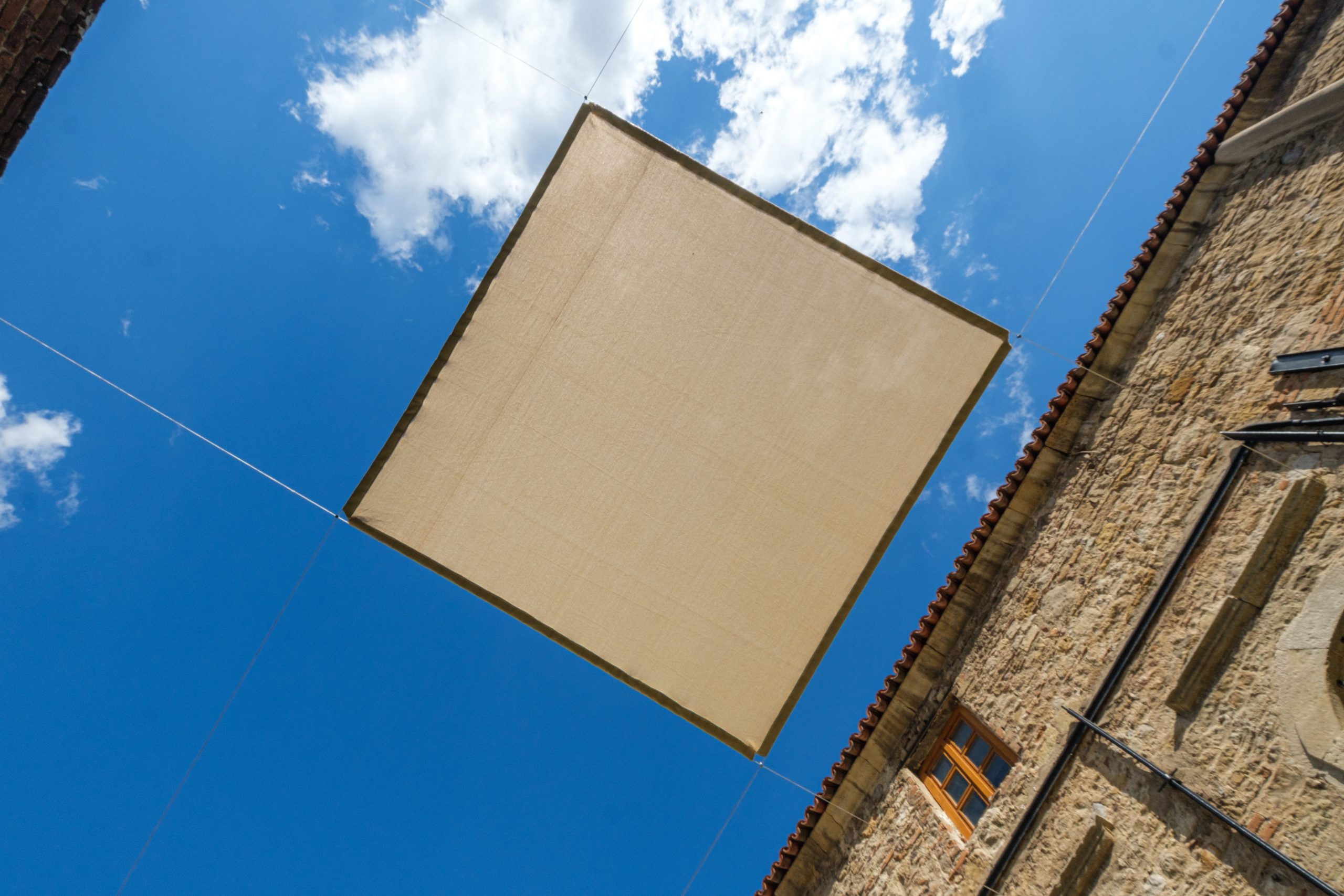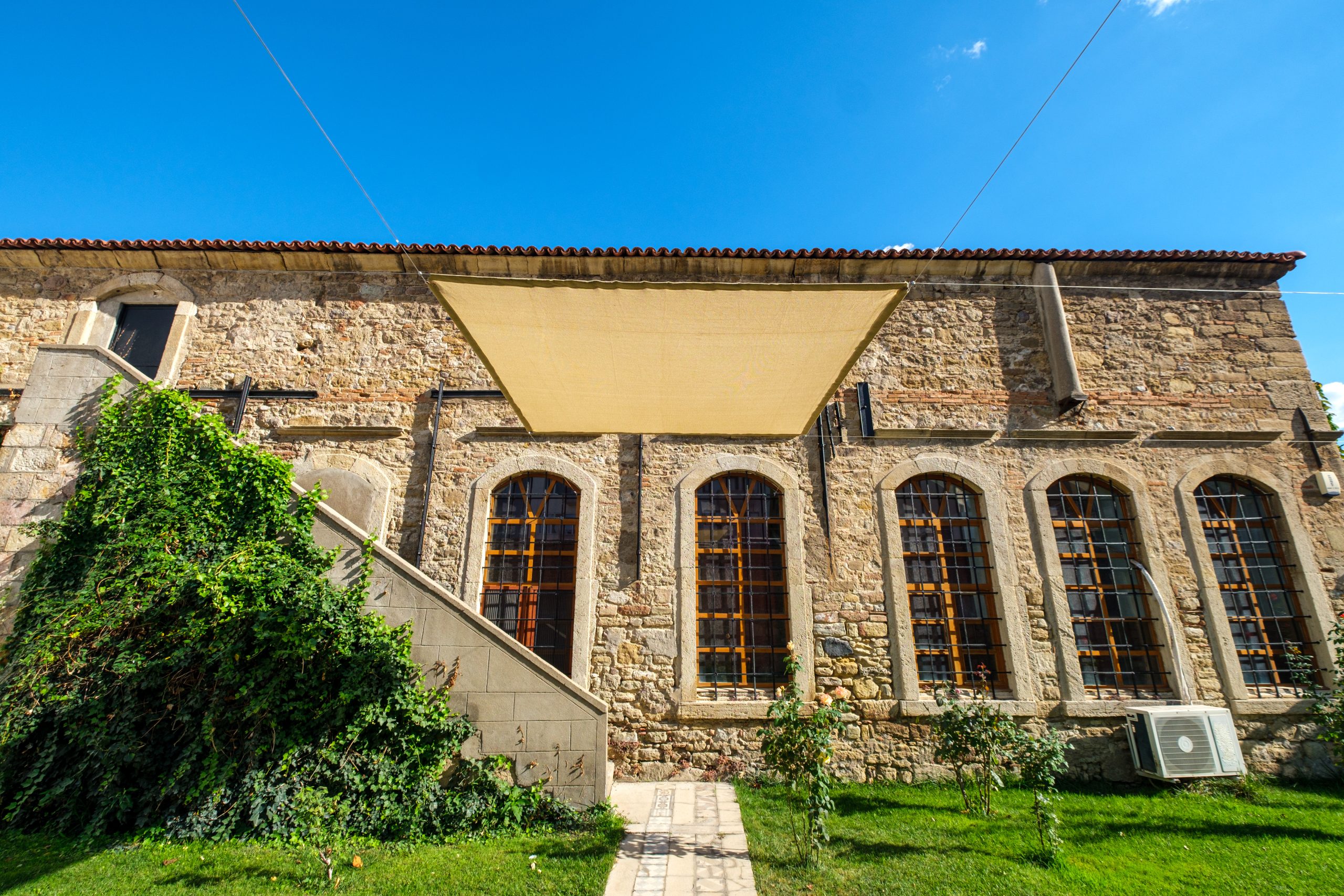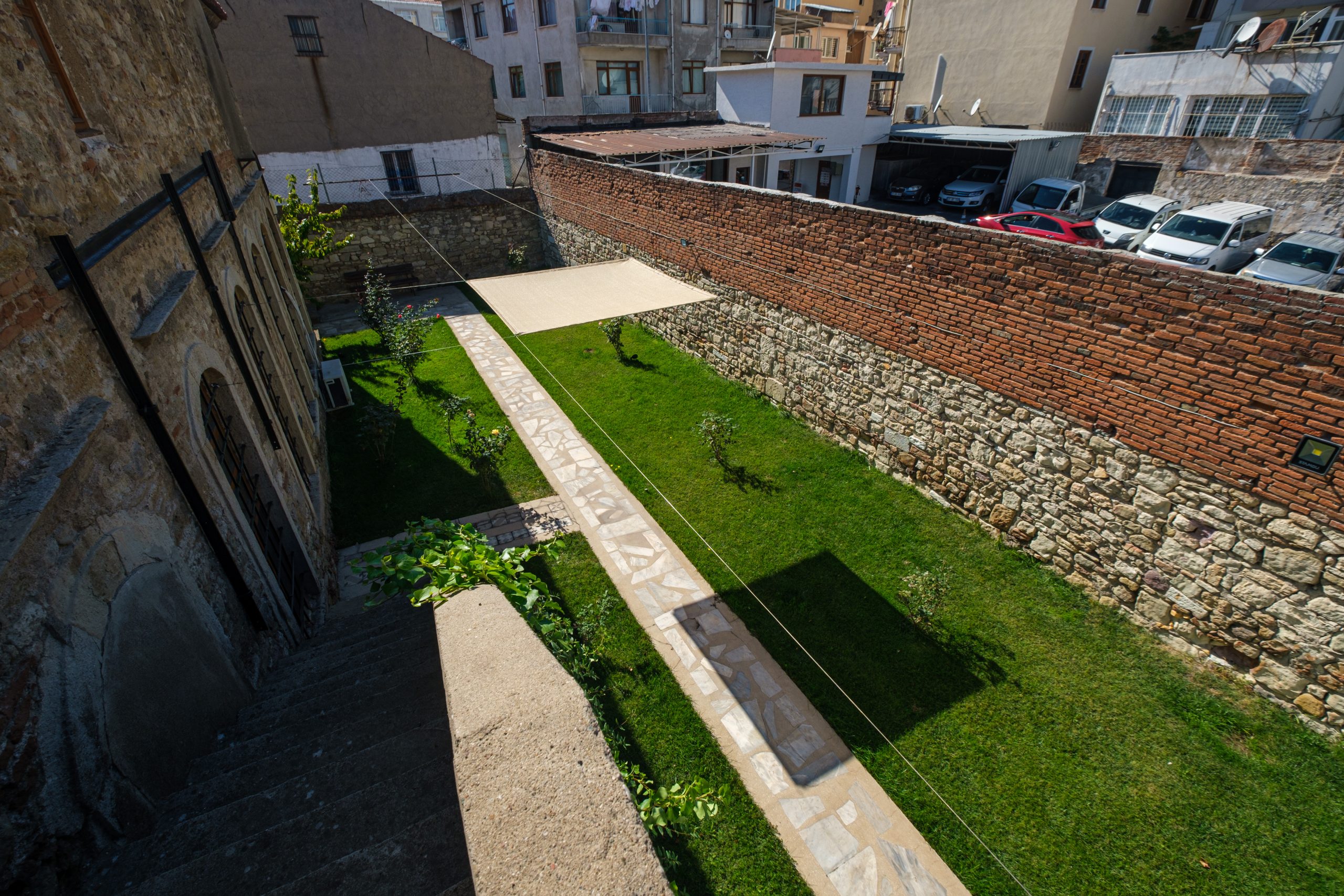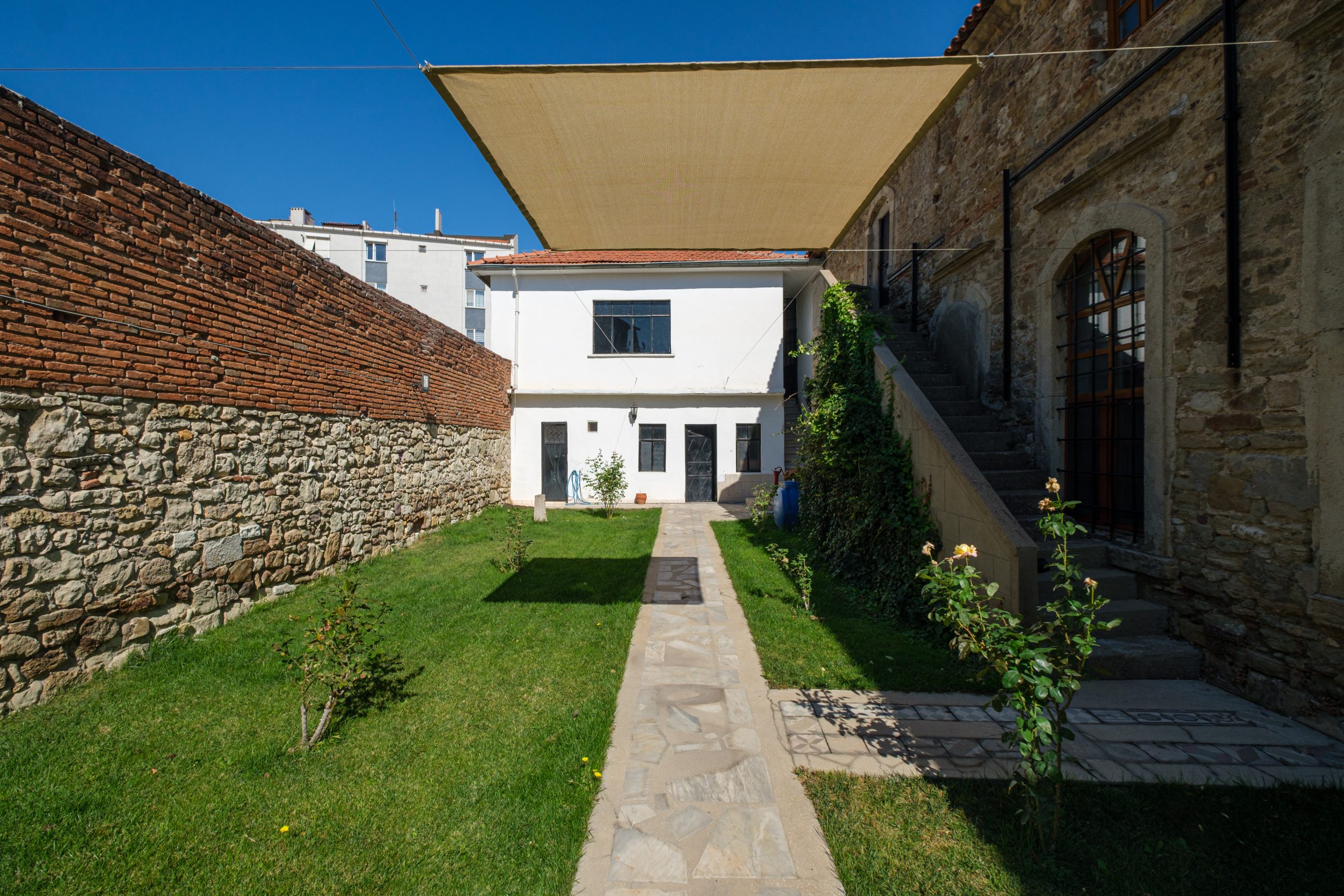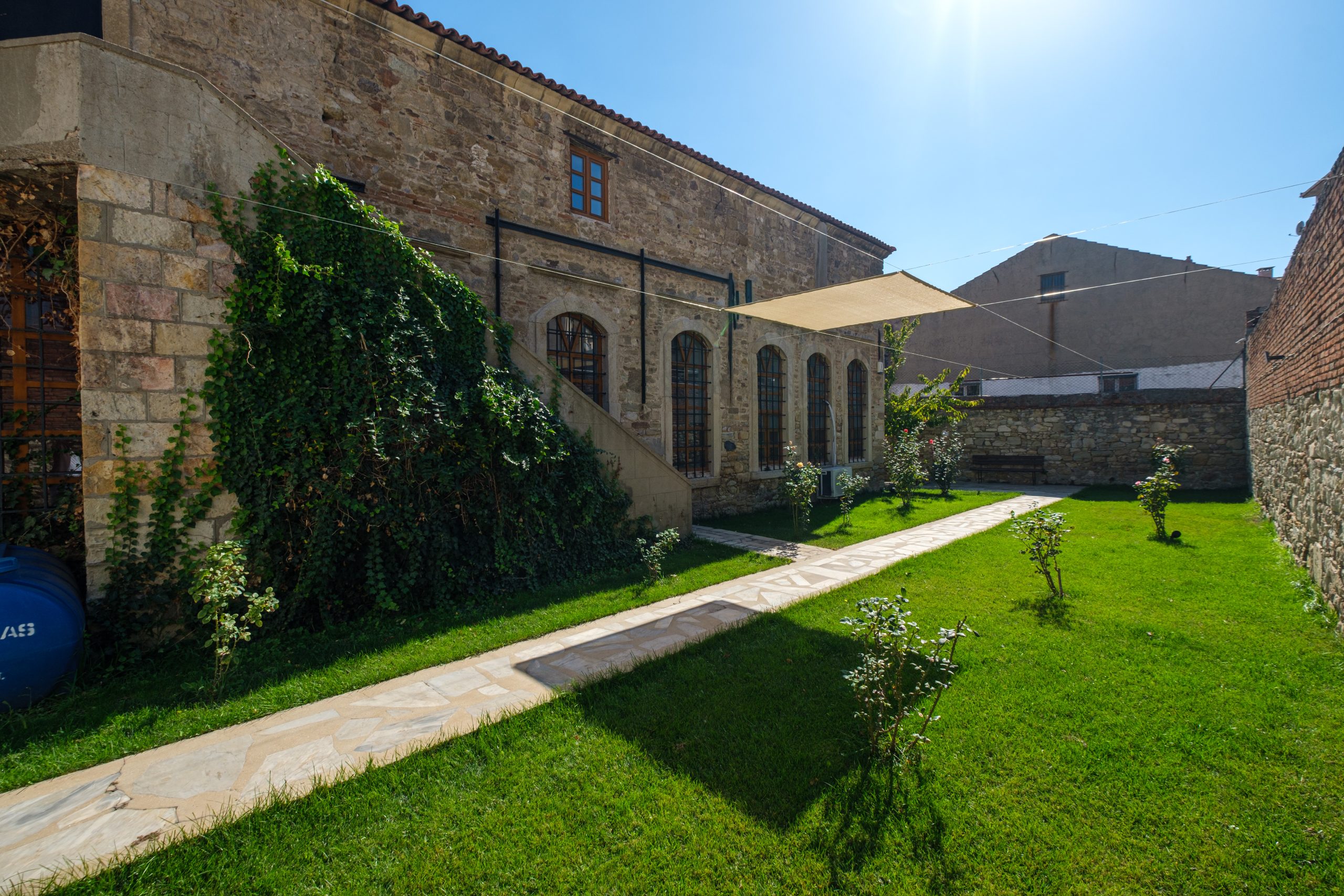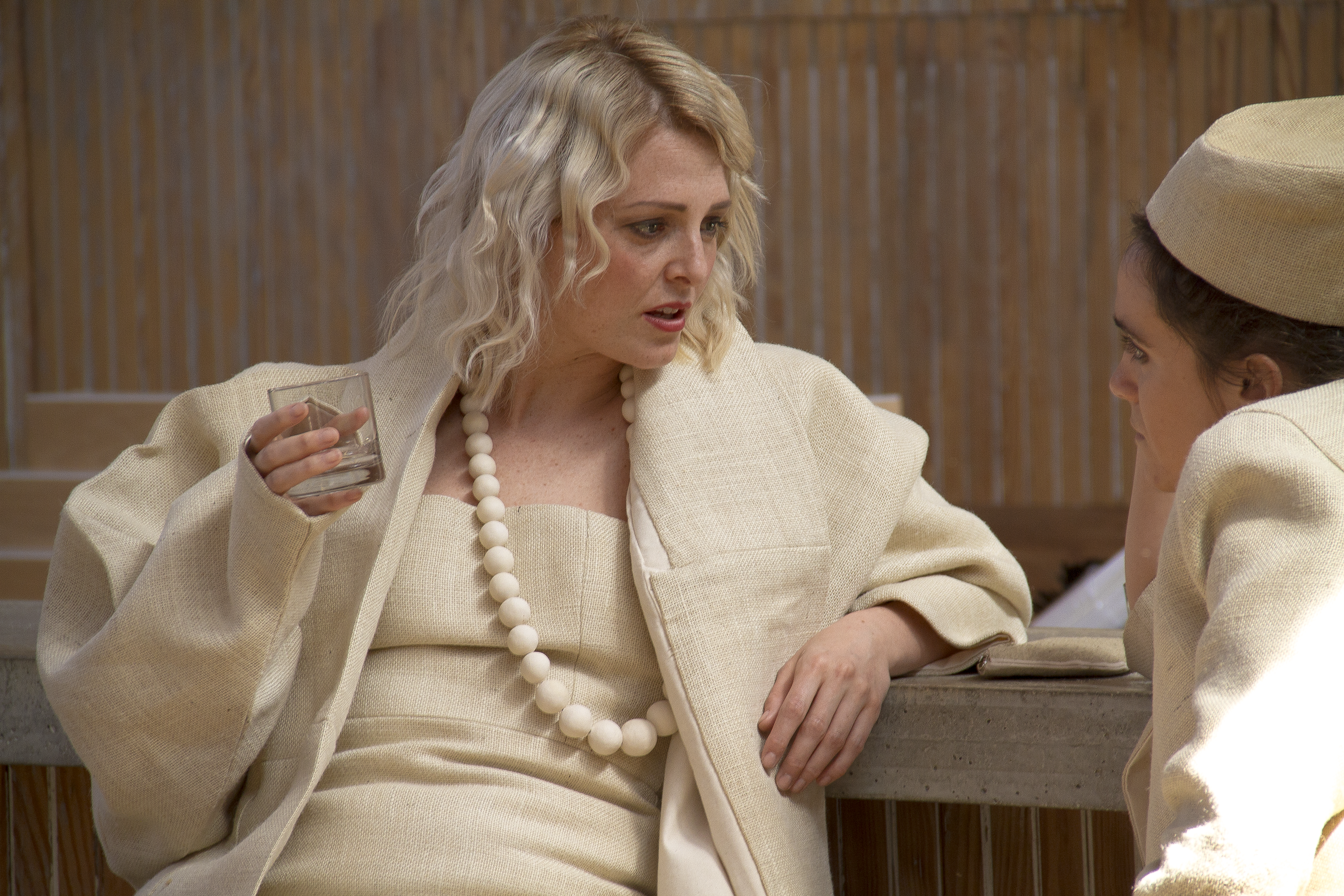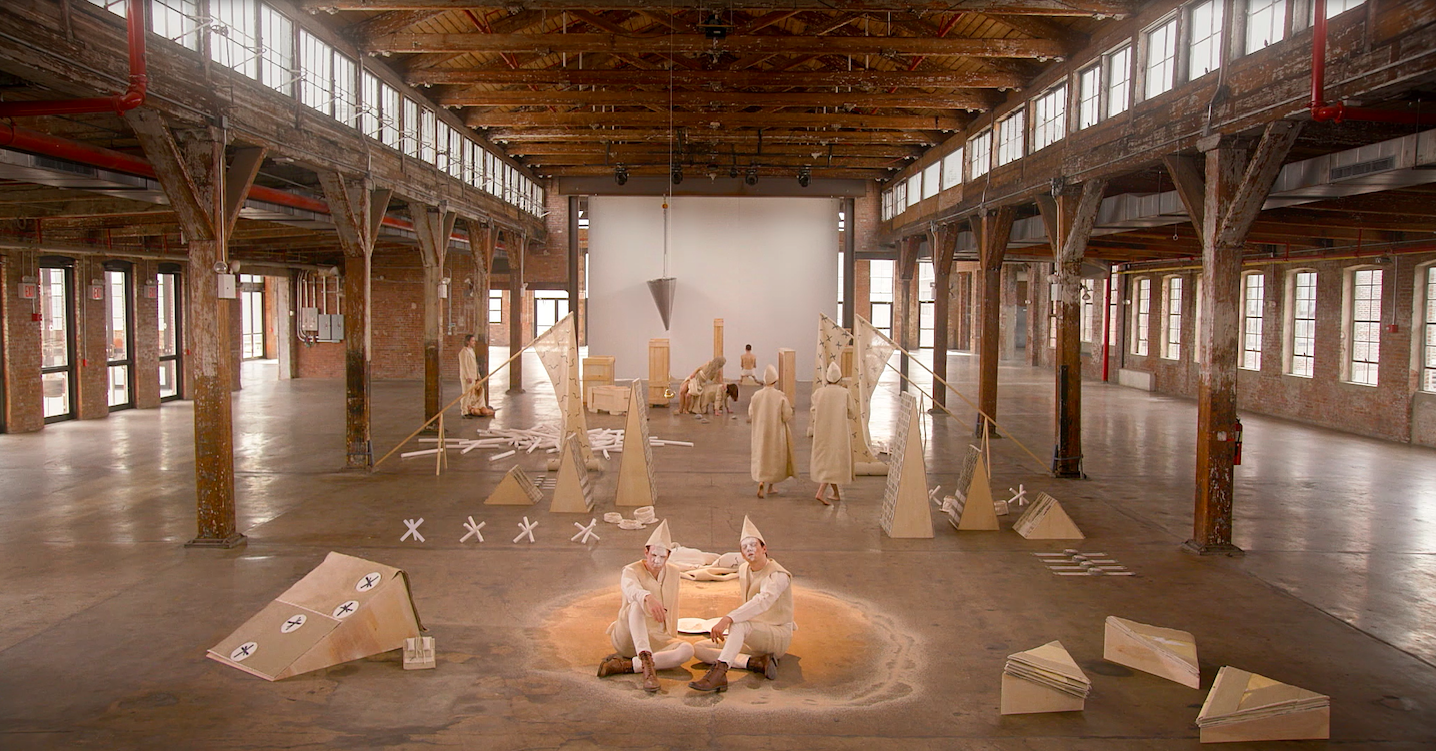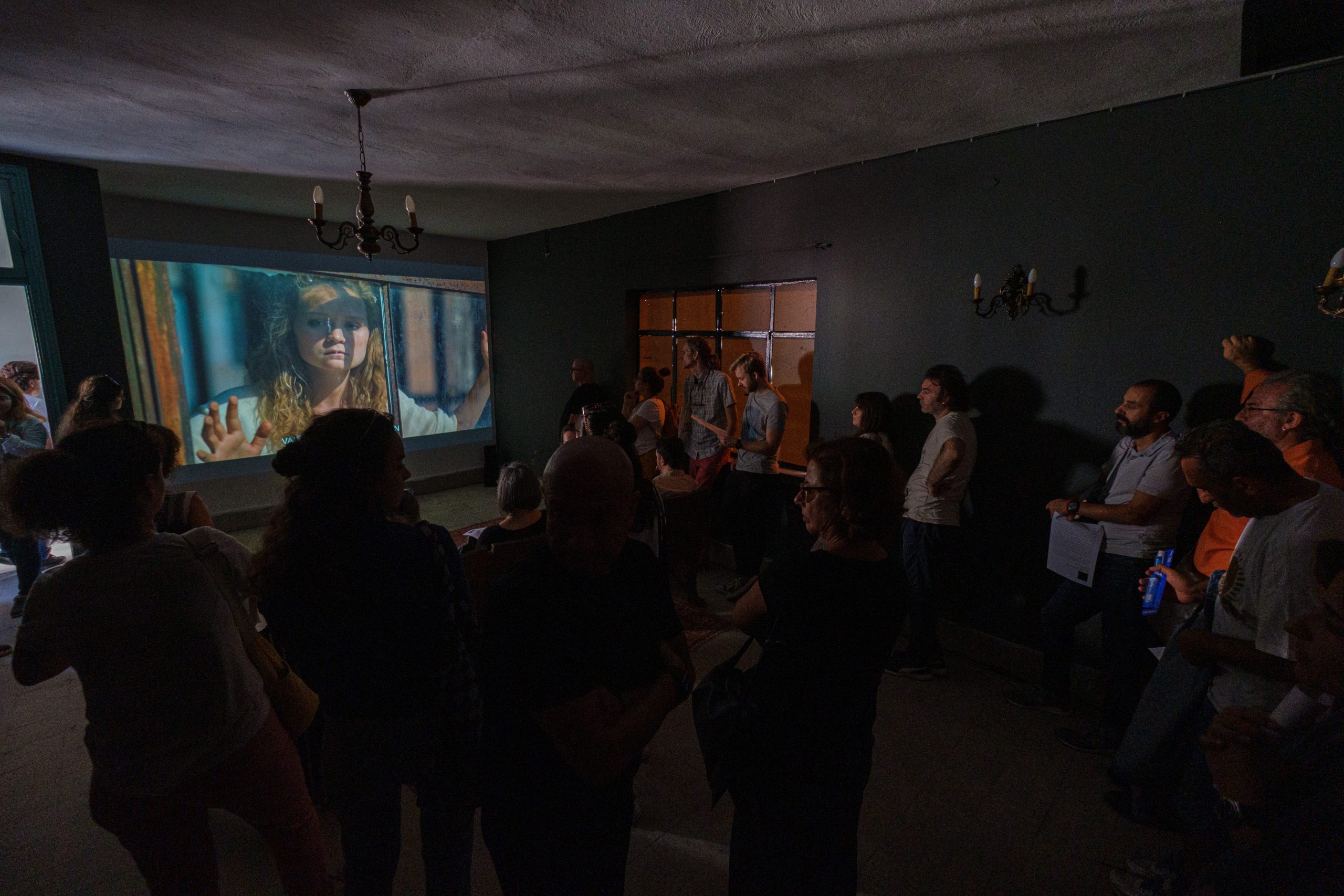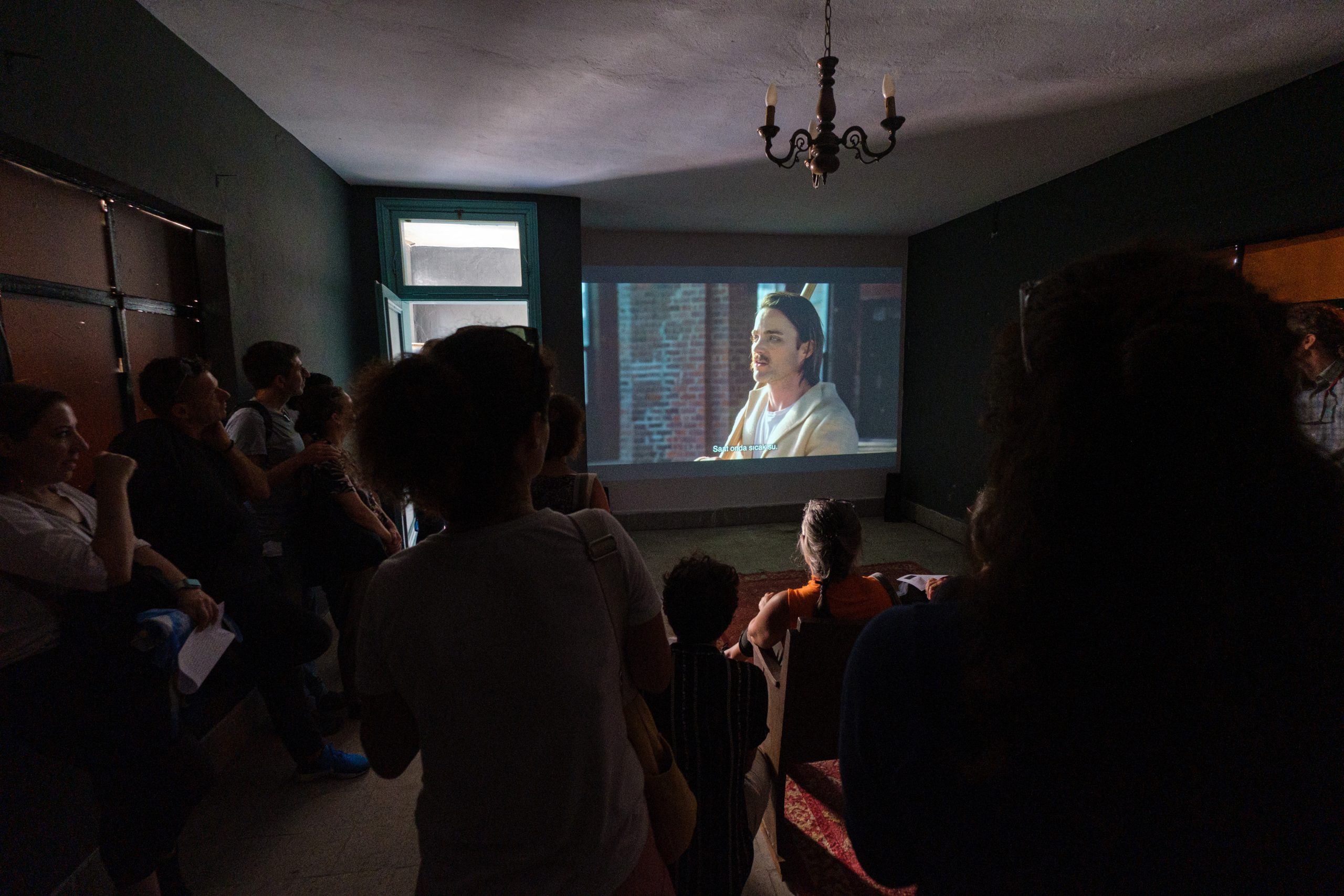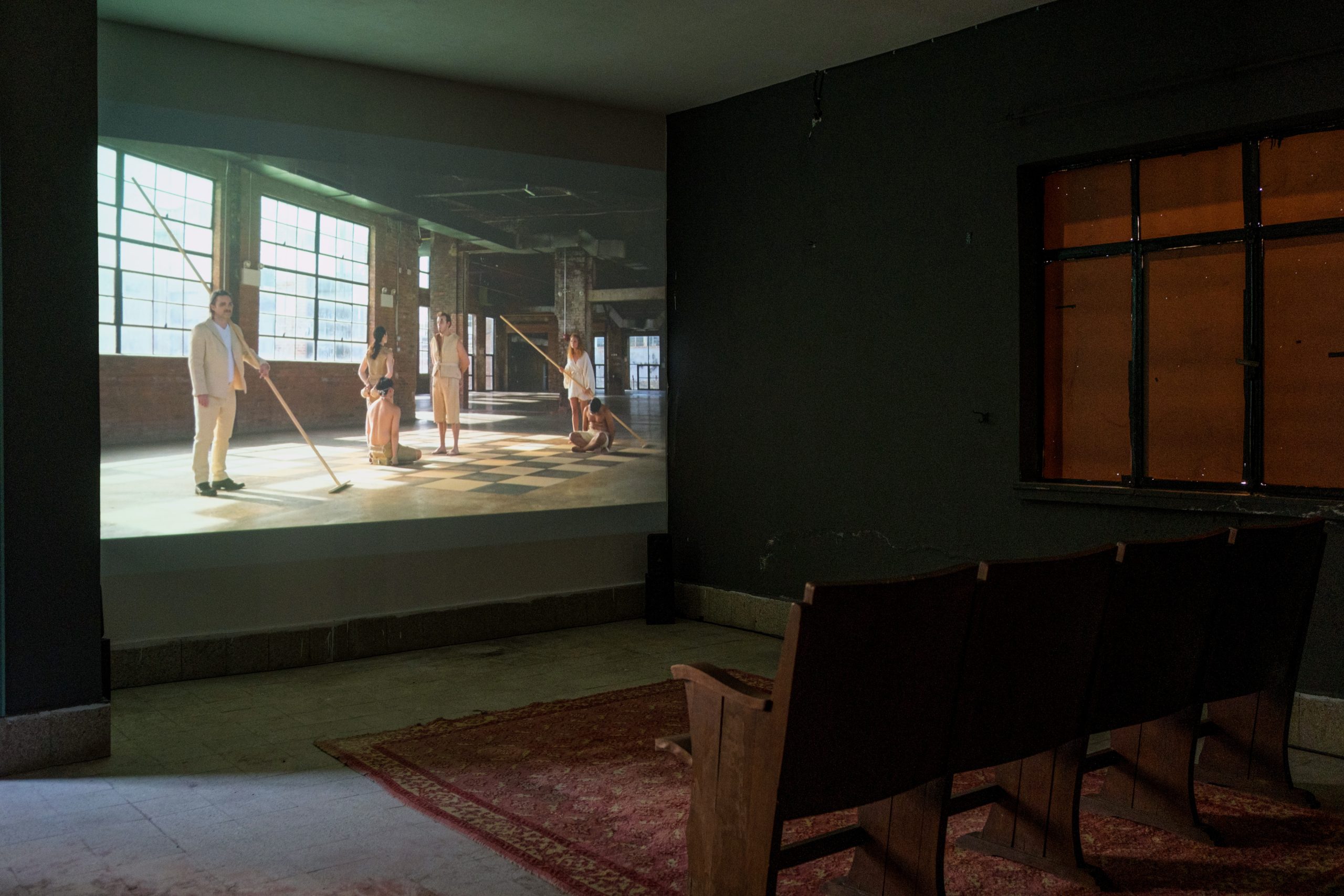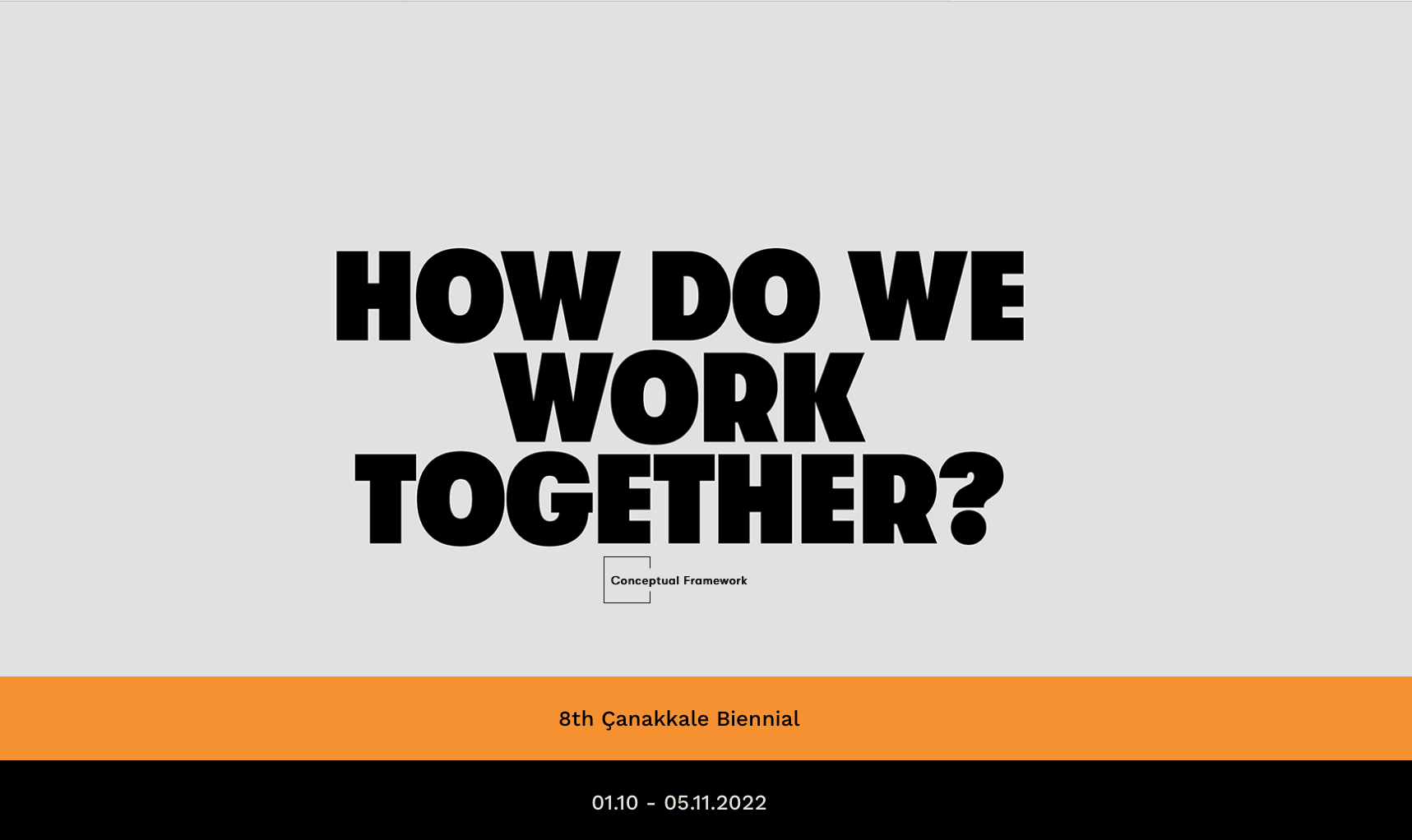Aktığı yerden büyüyen / What grows where it flows
Liliya Lifanova – Cevdet Erek
01/10 – 05/11/2022
Çanakkale – Mekor Hayim Sinagogu
1 Ekim – 5 Kasım 2022 tarihleri arasında sekizincisi düzenlenecek Çanakkale Bienali’ne davet edilen Monitor Aktığı yerden büyüyen başlıklı sergide, Liliya Lifanova ve Cevdet Erek’i bir araya getiriyor. Senenin sadece belirli günlerinde ibadete açık olan Mekor Hayim Sinagogu’nda gerçekleşecek sergi, mekânın isminden ilhamla, yaşamın kaynağından yola çıkarak şekilleniyor.
Yaşamın kaynağı birbirinden farklı unsurları barındırabilen bir tanımlama olsa da yaşamsal kaynaklarda akışın kesintiye uğraması daima benzer sonuçlar doğurur. Aktığı yerden büyüyen başlıklı sergi, akışın kesintiye uğramadığı bir düzende yaşamın olası mevcudiyet biçimlerini arar. Yer altından yeryüzüne devinimin duraksamadığı bir sistem hangi koşullar altında sekteye uğrar? Liliya Lifanova, T.S. Eliot’ın Çorak Ülke şiirinden yola çıkarak Çorak Ülke Üzerinde Seyir isimli heykel, ses ve yerleştirmelerle kurguladığı performatif video çalışmasını üretir. Savaşın sebep olduğu yıkım toplumun ahlâkî ve manevî çöküşünü de beraberinde getirmiştir. Güncelliğini hâlâ koruyan meselelere de odaklanan bu çalışma, tarihsel bellek üzerinden ilerleyen bir anlatı sunar. Byung-Chul Han “Hayatta kalma histerisinin hâkim olduğu toplum bir ölememişler toplumudur. Ölemeyecek kadar canlı ve yaşayamayacak kadar ölüyüz.”* diye belirttiği Palyatif Toplum kitabında acı korkusu üzerine düşünür. Tarih, hafıza, umutsuzluk ve hâyâl kırıklıkları doğanın döngüsünde toprak altında kaldığı sürece, düşlerini unutmaya istekli insanlar için yok hükmündedir. Fakat tabiatın, akışın sürekliliği baharın gelişiyle kendini gösterdiğinde, toprağın altındaki her şey yeryüzüne doğru yol alır. Çorak Ülke Üzerinde Seyir nehrin artık akmadığı, taşın, toprağın, yaşayan ölülerin ve sadece hazin hatıraların hüküm sürdüğü bir düzende mânânın peşine düşer. Kişiye, kendisinden başka olanı göstermek için onu gölgenin altına sakin tekrarlarla davet eder. Anestezi altındaki toplumun bu gölge altına icabeti acıyı açığa çıkarır. Acı, yeniden inşa edilecek derin bağlar için kaynaktır. Anlamın yeniden kazanılmasını sağlayacak insan ilişkilerindeki dönüşüm, kurtuluşun yolunu açacaktır.
Çalışmalarında mekânı, zamanı ve sesi birlikte hareket eden ögeler olarak kullanan Cevdet Erek 4 Sesli Nokta ve bir Gölgelik ile Avlu Süslemesi ve bir Havra isimli çalışmasında, tıpkı Lifanova gibi, izleyiciyi gölgenin altına çağırır. Mekor Hayim Sinagogu’nun bahçesinde yer alan bu çalışma, sanatçının 11. Sharjah Bienali için 2013’te ürettiği 4 Sesli Nokta ve bir Gölgelik ile Avlu Süslemesi’nin bir uyarlamasıdır. Ayrıca 2014 yılında 5. Marakeş Bienali’nde 8 Sesli Nokta ile Avlu Süslemesi ve bir Hapishane adlı versiyonu gösterilmiştir. Mekor Hayim Sinagogu avlusu için özel üretilen bu eserde dört ayrı noktaya yerleştirilmiş hoparlörlerden yayılan bir ritmin parçaları ancak gölgeliğin altında birleşerek anlamlı bütünü oluşturur. Eserde kaynak olarak kullanılan ses örnekleri Yahudilerin özel ve kutsal günlerinde kullandıkları, koç boynuzundan yapılan şofar üflenmesi ile elde edilmiştir. Sanatçı, mimarinin “süslenmesi” konusunda görsellik yerine ritmik tekrarlardan oluşan ses örgülerinin birbirleriyle ilişkilerini önerirken ritim düşüncesi için bir alan oluşturur. Fransız düşünür Henri Lefebvre Ritimanaliz kitabında toplumsal ilişkilerin ritimle olan bağını açıklarken farklı ritimler arasındaki uyumun ittifakı doğurduğundan söz eder. Toplumu oluşturan unsurlar arasındaki ilişkinin çeşitli sebeplerle çökmeye başlaması ise zaman veya mekânda aritmiyi açığa çıkarır.** Lefebvre’in döngüsel ve doğrusal olarak tanımladığı tekrarların birlikteliği ritmin, yani zamanın ölçüsünü oluşturur.*** Gün boyu penceresinden sokağı dinlediğimiz mekân bize somut ve soyut ritimleriyle o mekân hakkında bilgi verir. Mekânın kaynağına inilebilecek verilere ise bu ritimler bir araya geldiğinde ulaşılabilir. Lefebvre, bir mekâna ritimle müdahale etmenin öritmiyi güçlendirme gayesi taşıdığını söyler.**** Cevdet Erek’in 4 Sesli Nokta ve bir Gölgelik ile Avlu Süslemesi ve bir Havra isimli çalışmasının bu mekândaki kurgusunun niyeti de birden fazla ritmin birbirini yaratıcı şekilde etkileyeceği alanı açmaktır. Bu doğrultuda denebilir ki bir şeylerin yolunda gitmediği aritmi durumunu ortadan kaldırıp günümüz toplumunda sağlıklı yaşayan bir bedene ait öritmiyi bulmanın arayışıdır. Erek’in ritimanalist inceliğiyle oluşturduğu bu çalışma, sessizliğe zarif biçimde eklenerek kaybolan ötekiyi gölgenin altında yeniden görmemizi ve bir aradalığın geri getireceklerini keşfetmemizi sağlar.
Bugün tecrübe ettiğimiz, çeşitli sebeplerle akışına müdahale edilmiş dünyanın bir başka türlü varoluşunu düşleyen Aktığı yerden büyüyen başlıklı sergi, bir aradalığın insani yanından beslenir. Aktığı yerden büyüyen, geçmişin sarsıntısı ve şimdinin kayıtsızlığı arasından “ötekinin iyileştirici eli”*****’ni geleceğe uzatan hakikati bulmaya çalışır.
* Byung-Chul Han, Palyatif Toplum, Çev. Haluk Barışcan, Metis Yayınları, 2022, İstanbul, s. 27-28.
** Henri Lefebvre, Ritimanaliz, Çev. Ayşe Lucie Batur, Sel Yayıncılık, İstanbul, 2017, s. 96.
*** a.g.e., s32.
**** a.g.e., s.96.
***** a.g.e., s.40.
What grows where it flows
Liliya Lifanova – Cevdet Erek
01/10 – 05/11/2022
Çanakkale – Mekor Hayim Synagogue
Monitor, invited to the eighth Çanakkale Biennial to be held between October 1st and November 5th, 2022, brings together Liliya Lifanova and Cevdet Erek in the exhibition titled What grows where it flows. The exhibition, which will take place at the Mekor Hayim Synagogue that is open for worship only on certain days of the year, is shaped by the source of life with an inspiration to the name of the place.
Although the source of life is a definition that can contain elements different from each other, interruption of flow in vital resources always leads to similar results. The exhibition titled What grows where it flows searches for possible forms of existence of life in a cosmos where the flow is not interrupted. Under what conditions does a system, where the movement from underground to the earth is uninterrupted, comes to a full stop? Based on T.S. Eliot’s poem The Waste Land, Liliya Lifanova has produced a performative video work titled Flight Over Wasteland, which she designed with sculpture, sound and installations. The destruction caused by the war brought about the moral and spiritual collapse of the society. Lifanova’s work, which focuses on issues that are still relevant, presents a narrative that proceeds through historical memory. In his book Palliative Society, Byung-Chul Han reflects on the fear of pain. He writes, “A society dominated by the hysteria of survival is a society of the undead. We are too alive to die and too dead to live.” * As long as history, memory, despair and disappointment remain buried in the cycle of nature, they are null and void for people willing to forget their dreams. However, when the continuity of the nature and the flow manifests itself with the arrival of spring, everything under the earth moves towards the surface. Flight Over Wasteland pursues meaning in a cosmos where the river no longer flows; where stone, soil, the living dead and only sad memories rule. The exhibition invites people to come under the shadow with calm repetitions to show them what is different from themselves. The compliance of the society under anesthesia to this call to the shadow is a revelation of the pain. Pain is the source for the deep bonds to be rebuilt. The transformation in human relations, which will enable the regaining of meaning, will open the way to salvation.
Cevdet Erek uses space, time and sound as elements that move together in his works. In his work called Courtyard Ornamentation with 4 Sounding Dots and a Shade, and a Synagogue, he invites the audience to the shadows just like Lifanova does. His work, located in the garden of Mekor Hayim Synagogue, is an adaptation of the Courtyard Ornamentation with 4 Sounding Dots and a Shade, which the artist produced for the 11th Sharjah Biennale in 2013. In addition, another version of the work called Courtyard Ornamentation with 4 Sounding Dots and a Prison was shown at the 5th Marrakech Biennial in 2014. In this work, which was specially produced for the courtyard of Mekor Hayim Synagogue, the parts of a rhythm emanating from the speakers placed at four different dots can only form a meaningful whole when they unite under the shade. The sound samples used as a source for the work are obtained by blowing the shophar made of ram horn, which is used by the Jews on their special and holy days. The artist creates a space for the thought of rhythm when proposing the interrelationships of sound patterns consisting of rhythmic repetitions rather than visuality regarding the “ornamentation” of architecture. In his book Rhythmanalysis, French thinker Henri Lefebvre mentions that the harmony between different rhythms creates an alliance as he explains the bond of social relations with rhythm. The collapse of the relationship between different elements that make up the society for various reasons reveals arrhythmia in time or space.** The combination of repetitions, which Lefebvre defines to be cyclical and linear, constitutes the measure of rhythm, that is, time.*** The space, where we listen to the street through its window all day, gives us information about that space with its concrete and abstract rhythms. The data that can lead to the source of the space can be reached when these rhythms come together. Lefebvre says that intervening in a space with rhythm has the purpose of strengthening the eurhythmy.**** The intention of the setup of Cevdet Erek’s Courtyard Ornamentation with 4 Sounding Dots and a Shade, and a Synagogue in this space is to open the space where more than one rhythm will affect each other creatively. Accordingly, it is the search for finding the eurhythmy of a healthy body in today’s society by way of eliminating the arrhythmic situation where something goes wrong. The work, created by Erek with his rhythmanalist delicacy, incorporates gracefully to silence, allowing us to see the lost other again under the shadow and discover what togetherness would bring back.
The exhibition What grows where it flows, which dreams of another existence of the world whose flow has been interrupted for various reasons, feeds on the human side of togetherness.
The exhibition tries to find the truth that extends the “healing hand of the other”***** to the future through the trauma of the past and indifference of the present.
* Byung-Chul Han, Palliative Society, Translated by Haluk Barışcan, Metis Publications, 2022, Istanbul, pp. 27-28.
** Henri Lefebvre, Rythmanalysis, Translated by Ayşe Lucie Batur, Sel Publications, Istanbul, 2017, p. 96.
*** Op. cit., p. 32
**** Op. cit., p.96.
***** Op. cit., p.40.
